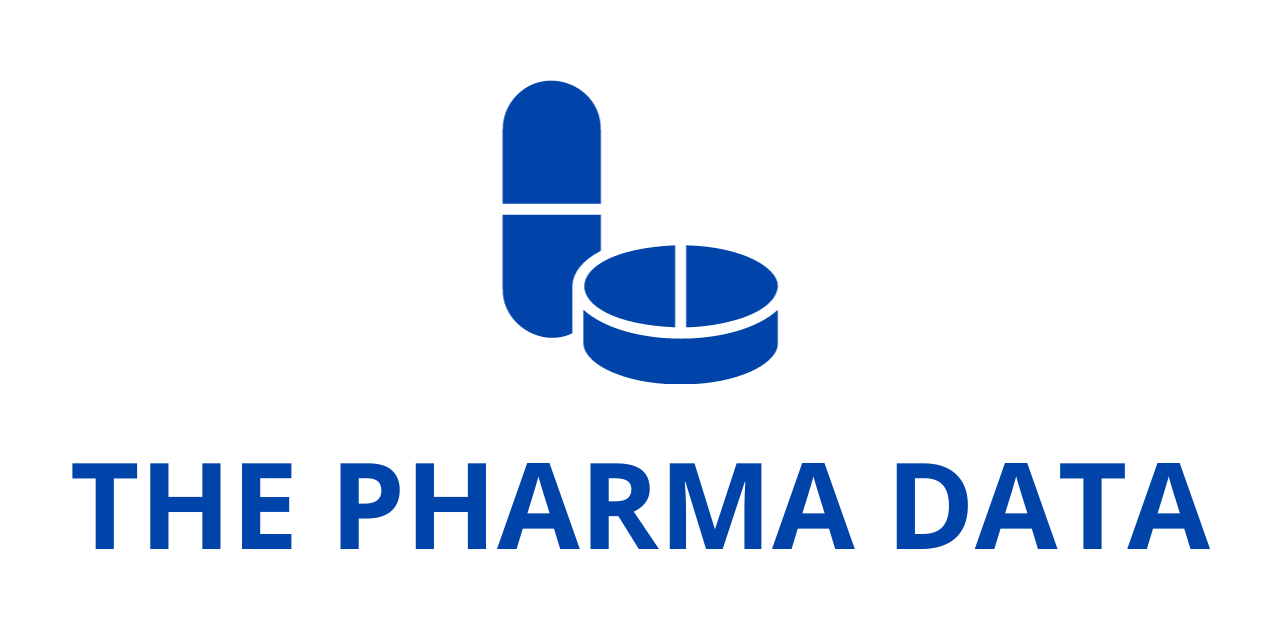
Kardigan Showcases Positive Phase 2 Data for Ataciguat in Moderate Calcific Aortic Valve Stenosis at AHA Scientific Sessions 2025
Kardigan, a cardiovascular-focused biotechnology company working to modernize drug development for heart disease, announced encouraging new Phase 2 results for its lead investigational therapy, ataciguat, in patients with moderate calcific aortic valve stenosis (CAVS). The data, presented during an oral session at the American Heart Association (AHA) Scientific Sessions 2025, highlight the drug’s potential to address one of the most pressing unmet needs in structural heart disease—slowing the progression of valve calcification and preserving cardiac function before patients experience irreversible damage.
The company emphasized that ataciguat, an investigational oral activator of soluble guanylate cyclase (sGC), demonstrated the ability to slow the accumulation of aortic valve calcium (AVC). In doing so, the treatment appeared to enhance markers of valvular compliance, improve cardiac output (CO), and support preservation of cardiac function compared to placebo over a six-month period. These findings bolster the therapeutic rationale for ataciguat as a potential intervention in a disease where no approved pharmacological treatments exist.
The Growing Burden of Aortic Valve Stenosis
Aortic valve stenosis is one of the most common cardiovascular disorders among older adults. While early stages are typically monitored, patients with moderate disease currently have no disease-modifying therapeutic options. Instead, existing care pathways rely on clinical monitoring until the disease progresses to a severe state, when invasive valve replacement—either transcatheter aortic valve replacement (TAVR) or surgical valve replacement—becomes necessary.
Calcific aortic valve stenosis is characterized by the progressive accumulation of calcium deposits on the aortic valve leaflets. This calcification restricts proper valve opening, increasing pressure within the heart and forcing the left ventricle (LV) to work harder to pump blood to the rest of the body. Over time, the continual overload leads to maladaptive ventricular remodeling characterized by hypertrophy, fibrosis, and ultimately, heart failure.
This degenerative cycle underscores the dire need for medical therapies that can intervene earlier in the disease process—especially during the moderate stage—before patients enter a cascade toward irreversible cardiac dysfunction and procedural intervention.
Expert Perspective: Targeting the Underlying Cause
“The primary driver of calcific aortic valve stenosis is the accrual of aortic valve calcium, which causes chronic left ventricular pressure overload, leading to maladaptive ventricular remodeling and dysfunction. Without disruption, this will result in progression to heart failure and eventually procedural intervention in most patients,” said Brian Lindman, M.D., MSCI, medical director of the Structural Heart and Valve Center at Vanderbilt University Medical Center.
Dr. Lindman noted the significance of ataciguat’s mechanism and the Phase 2 findings, stating that the data reinforce the potential to deliver the first medical therapy targeting the root cause of moderate CAVS. Instead of passively watching and waiting, he added, the field may be prepared to embrace a therapeutic strategy with disease-modifying potential.
Phase 2 Trial Outcomes: Improvements in Cardiac Function and Valvular Health
The Phase 2 trial enrolled 23 patients with moderate calcific aortic stenosis and randomized them to receive 200 mg ataciguat (n=12) or placebo (n=11) once daily over a 12-month period. Although small in scale, this double-blind, randomized study generated promising findings that support further advancement into late-stage development.
Key findings from the six-month analyses included:
- Improved left ventricular ejection fraction (LVEF) and cardiac output (CO)
- Slower progression of diastolic dysfunction
- Reduced rate of aortic valve calcium accumulation
- Correlation between minimal AVC increase and the greatest improvement in CO
These effects suggest that patients with slower AVC progression may derive greater functional benefit, lending credibility to the hypothesis that reducing or stabilizing AVC may help maintain mechanical valve performance.
Measuring Valvular Resistance and Remodeling
An important aspect of the study involved examining aortic valve resistance, an alternative approach to understanding changes in valvular performance and compliance. Ataciguat treatment slowed the worsening of aortic valve resistance relative to placebo at six months. These changes correlated with modifications in left ventricular mass index (LVMI), a widely used indicator of LV remodeling and hypertrophy. Lower valvular resistance and reduced LVMI signal a more favorable remodeling state.
Together, these findings support the potential of ataciguat to preserve both valvular health and ventricular structure, laying a mechanistic foundation for a more comprehensive disease-modifying approach. Such outcomes could eventually delay or prevent the deterioration that leads to the need for valve replacement.
KATALYST-AV Phase 3 Clinical Trial
The encouraging Phase 2 data will inform the KATALYST-AV Phase 3 trial, which is now underway. This pivotal study is designed to further evaluate ataciguat and placebo with a primary goal of determining whether treatment can preserve functional capacity. Specifically, researchers will assess myocardial and valvular endpoints to better define the therapy’s impact on disease trajectory and patient quality of life.

Jay Edelberg, M.D., Ph.D., co-founder and chief medical officer of Kardigan, highlighted the significance of this next step:
“For the millions of patients diagnosed with moderate calcific aortic valve stenosis each year, there are no treatment options except to watch and wait for their disease to progress to a point where surgical intervention is necessary to replace the valve. The Phase 2 data on ataciguat presented at AHA reinforce our hypothesis that slowing the buildup of aortic valve calcium is associated with improvements in cardiac output and function.”
Dr. Edelberg expressed optimism about how results from KATALYST-AV will help further characterize ataciguat’s effects. If successful, the therapy could represent a major breakthrough by offering patients the first medical option to delay progression of CAVS before they face the need for invasive intervention.
The Science Behind Ataciguat
Ataciguat belongs to a class of drugs known as soluble guanylate cyclase activators. Soluble guanylate cyclase (sGC) is a critical enzyme in cardiovascular signaling that helps regulate vascular tone, blood flow, and cardiac function. Activation of sGC promotes the synthesis of cyclic guanosine monophosphate (cGMP), a molecule involved in pathways that support vascular health and reduce pathological remodeling.
By stimulating sGC activity, ataciguat is thought to reduce calcific disease progression and promote preservation of ventricular and valvular function. This mechanism provides a direct link between cellular signaling and the physical processes underpinning calcification and remodeling in CAVS.
The use of sGC activators has already shown promise in pulmonary hypertension; applying this pharmacologic principle to valvular calcification represents an innovative extension of the pathway.
Addressing an Unmet Clinical Need
Moderate calcific aortic stenosis is a critical clinical inflection point. Patients are not yet candidates for valve replacement, but the disease is nonetheless progressive and capable of driving serious structural heart consequences. Despite this, no medications have been approved to slow disease progression, improve valve compliance, or preserve cardiac function at this stage.
As a result, millions of patients follow a “watch and wait” model, monitored over time through echocardiography and symptom assessment. Yet by the time disease is severe and symptoms appear, significant and potentially irreversible changes in cardiac structure and valve function may have already taken place, leaving surgery as the only effective option.
Therapies like ataciguat, if successful, could shift this paradigm and establish earlier medical intervention as a standard of care.
Publication in Circulation
The primary Phase 2 clinical trial results were published in Circulation in February 2025, affirming the rigor and relevance of the data and signaling notable interest from the cardiovascular research community.
Kardigan’s Cardiovascular Pipeline
Ataciguat is one of three late-stage investigational candidates in Kardigan’s expanding pipeline, all of which take a targeted, disease-modifying approach to cardiovascular pathology. The company’s pipeline reflects a strategic focus on addressing the root causes of heart disease rather than managing downstream consequences.
In addition to ataciguat, Kardigan is developing:
- Tonlamarsen¹ — an angiotensinogen-targeted bridging therapy designed to disrupt the harmful cycle of acute severe hypertension. By modulating levels of angiotensinogen, the drug may be able to mitigate spikes in blood pressure that can precipitate emergency care events.
- Danicamtiv² — a potential first-in-class cardiac myosin activator targeting genetic dilated cardiomyopathy (DCM) driven by sarcomeric variants. Danicamtiv is designed to directly improve contraction in both the atria and ventricles, offering a mechanism to restore cardiac function in patients with inherited or genetic structural heart disease.
Taken together, these programs position Kardigan as an ambitious innovator in heart disease therapy—moving beyond symptomatic management to fundamentally influence disease biology.
Potential Implications for Cardiovascular Care
If ataciguat advances successfully through Phase 3 and reaches regulatory approval, it may represent a major shift in clinical management strategies for moderate calcific aortic stenosis. The ability to intervene medically, stabilize AVC progression, and preserve both cardiac output and ejection fraction would give clinicians a tool to delay or prevent the onset of severe disease.
Moreover, reducing or slowing calcification could potentially extend the time patients remain eligible for less-invasive procedures later in disease progression, such as TAVR, or improve procedural candidacy by maintaining healthier cardiac structure.
Such a change would echo broad shifts seen in other chronic diseases, where early, disease-modifying therapies have widened treatment windows and improved outcomes by intervening before organ failure or irreversible structural changes occur.
The Phase 2 data presented by Kardigan at the AHA Scientific Sessions 2025 offer compelling early evidence that ataciguat may be capable of slowing the progression of moderate calcific aortic valve stenosis. By reducing aortic valve calcium accumulation, improving cardiac output, preserving ejection fraction, and influencing valvular resistance and ventricular remodeling, the therapy has shown promise as a potential first-in-class, disease-modifying option.
The findings set the stage for the pivotal KATALYST-AV Phase 3 trial, which will evaluate whether ataciguat can preserve functional capacity and delay the progression of disease in a larger cohort. If confirmed, this could provide a long-awaited pharmacologic alternative to the current wait-and-replace model of care.
With ataciguat and its broader portfolio—including tonlamarsen and danicamtiv—Kardigan is pursuing a new vision for cardiovascular care: one in which the underlying causes of disease are directly addressed, and patient outcomes are improved long before invasive procedures become necessary.
Source Link: https://www.businesswire.com/




